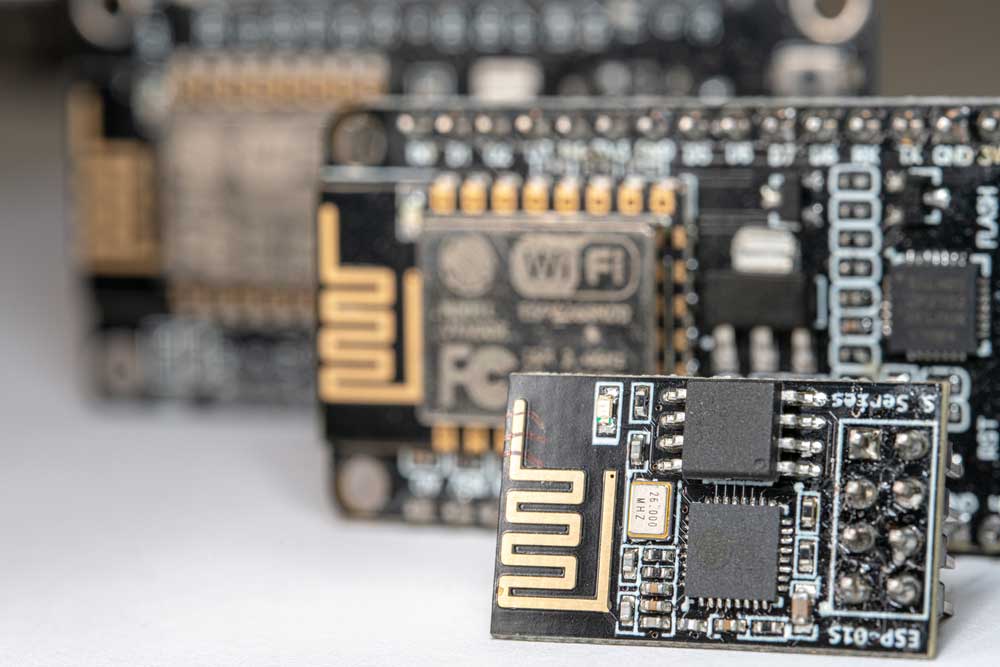All IoT products carry specific hardware requirements in terms of PCB design and layout requirements to ensure a low-noise, functional system, while also having the processing power needed to run an embedded application. Off of the device, IoT products must interact with other products and services over the internet, all of which might be facilitated by a web application running in the cloud.
At the core of these devices is a protocol that enables data transfer between devices, the cloud, and an end application or other device. IoT standards and frameworks are derived from the protocols supporting their communication functions, as well as hardware design standards that determine performance and acceptability of electronic assemblies. Companies that want to use or develop a custom IoT platform should start by considering the standards and frameworks needed in their products, as well as how these will relate back to the physical design.
Understanding IoT Frameworks
All IoT products need firmware and software at multiple levels to implement their intended functions, connectivity, and user experience. An IoT framework refers to the software architecture that is used to build an IoT ecosystem, ranging from applications deployed in the cloud to embedded code for an end device. IoT frameworks provide a standardized approach to building out a web platform or cloud-deployed application.
There are several telecommunications protocols that enable communication between devices and cloud platforms via the internet. Two of these are core internet protocols that support communication over the internet, known as Transmission Control Protocol/Internet Protocol (TCP/IP) and User Datagram Protocol (UDP). Additional standardized protocols are used for specific applications like low-bandwidth data transfer or application-to-application messaging. Some of the popular protocols include:
- Simple Mail Transfer Protocol (SMTP)
- Message Queue Telemetry Transport (MQTT)
- Advanced Message Queuing Protocol (AMQP)
- Extensible Messaging and Presence Protocol (XMPP)
These protocols will form the backbone of a product’s connection with the wider world via the internet. At the device level, there are several wireless protocols that enable connectivity between devices or with a local network, the latter of which will act as the intermediary for internet access. Some of the most popular are Wi-Fi and Bluetooth for consumer products, or Zigbee and LoRaWAN for low-speed, low-complexity products. Other protocols are available for deployment on the device, and many of these can be accessed during component selection by selecting SoCs with integrated transceivers supporting multiple protocols.

This ESP8266 modules include an integrated TCP/IP protocol stack that enables access to a Wi-Fi network.
Standards on IoT Products
While each of the above protocols can be treated as an industry standard of sorts, the standards landscape for IoT products continues to evolve from the perspective of hardware and software. Design firms and EMS companies that provide value-added engineering services for IoT products should understand how to design to these groups of standards to ensure compliance, product quality, and reliability.
Security
The IoT industry originally lacked software standards for some time beyond the standardization in protocols listed above. Today, there is movement in standards development from the perspective of security, both at the device level and in the cloud. IoT devices that are deployed in large networks present a large attack surface, and security standards are intended to address the ability for intruders to steal or manipulate data via access to physical devices or web platforms. At the device level, this continues to be an involved area of standards development, with industry leaders and the US government building their own sets of standards to address security.
Physical Design
The physical design will limit the capabilities of an IoT product, no matter what framework is being used. This is why the industry has developed important design, qualification, and manufacturability standards governing PCBAs. Best PCB design practices will help ensure a design will be manufacturable and functional within the product’s incorporated IoT standards and frameworks.
Once the components are selected and the design is ready for physical layout, the job of the product developer is to follow important qualification and reliability standards on PCBAs. The baseline set of standards on PCBs is the IPC standards, although certain industries like automotive and aerospace may impose their own set of stricter standards. Products that are targeting specific industries/markets or that carry regulatory requirements may need to be designed to these more stringent electronics design standards.
An experienced EMS provider that brings extensive design, engineering, and process automation experience can help you implement IoT standards and frameworks in your new platform. PCI has more than 30 years of EMS experience focused in consumer goods, industrial, automotive, and medical devices, as well as in Printed Circuit Board Assembly (PCBA) and box builds. Our Lean Six Sigma manufacturing expertise enables us to customize our manufacturing line to meet our partners’ requirements.
If needed, we provide our customers the flexibility needed to quickly scale production as needs arise. We provide our partners with high-quality products at lower manufacturing costs thanks to our shorter change-over time and leaner material control. Contact PCI today to learn more about our capabilities.